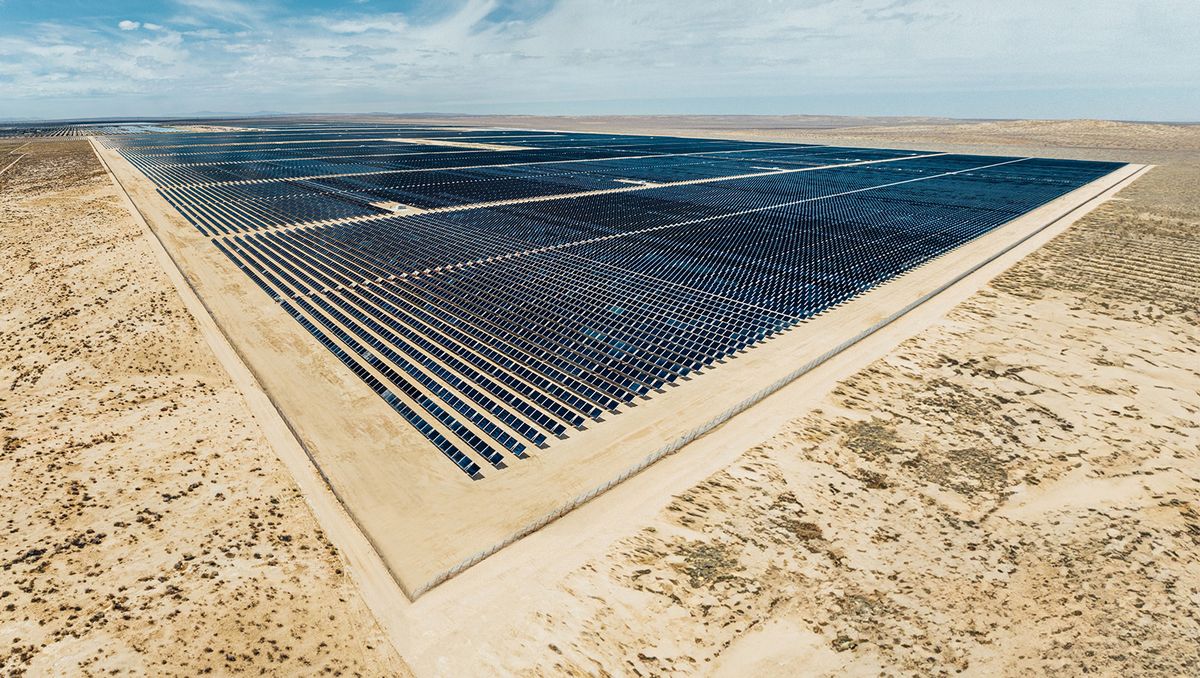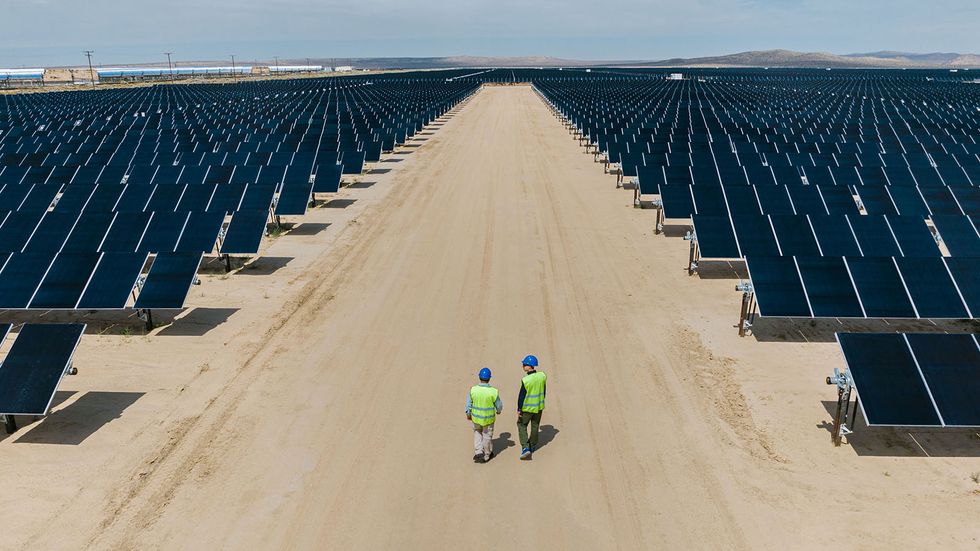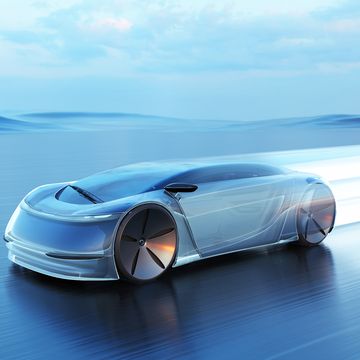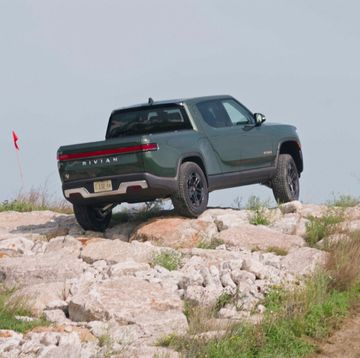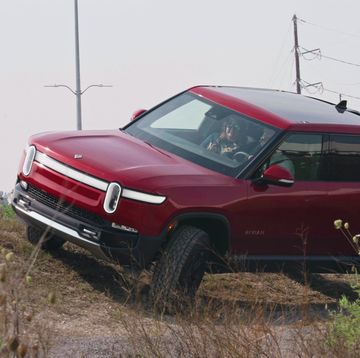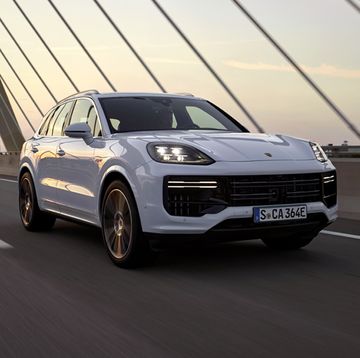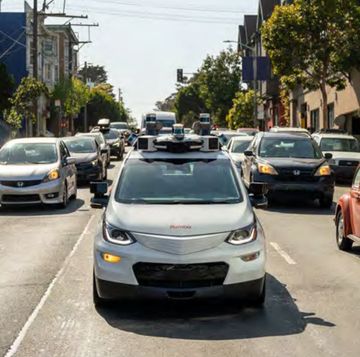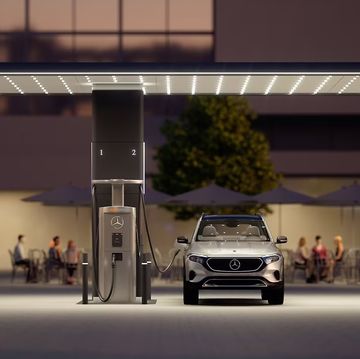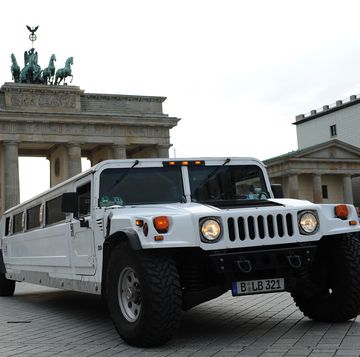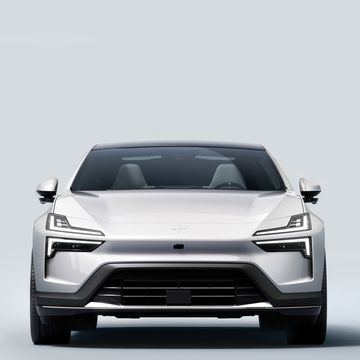- Electrify America launches solar farm in San Bernardino County, California, promising to generate 75 MW at peak solar capacity.
- The farm is expected to generate enough electricity to charge 500 EVs at once at 150 kW.
- Solar Glow occupies over one square mile and uses 200,000 individual solar panels.
Quite a bit of the discussion around a future where the overwhelming majority of cars are EVs centers on energy production, and usually involves questions like, "Where will we get all that power?" Questions about the US grid's resilience usually follow, especially in light of several high-profile incidents linked to peak usage, often due to unusual weather events.
Is it possible to achieve ZEV-only new car sales a little over a decade from now, as envisioned by states like California, by the year 2035?
This month Volkswagen's charging arm, Electrify America, has given us a glimpse of what one possible solution to the predicted energy crunch could involve, opening a massive new photovoltaic renewable energy generation project in the Golden State.
Dubbed Solar Glow, the array promises to generate 75 MW at peak solar capacity—enough to power 500 EVs charging simultaneously at 150 kW—with a combined annual output estimated at 225 Gigawatt-hours (GWh).
To put this number into perspective, in all of 2022 Electrify America delivered 173 GWh of electricity, providing about 493 million miles of EV driving, while saving 21 million gallons of gasoline. Solar Glow's projected annual output of 225 GWh easily eclipses that number.
The project is part of Electrify America's focus on what it calls "additionality"—producing renewable energy that might otherwise not be generated.
"We expect the demand on our charging network to continue to rise with the increase in EV ownership," said Jigar Shah, Director of Energy Services at Electrify America. "Solar Glow 1 adds new additional 100% renewable energy generation with estimated annual production that exceeds our 2022 network usage."
Located in San Bernardino County, the farm occupies an area just over one square mile and is composed of 200,000 individual solar panels. Built in partnership with Terra-Gen, Solar Glow is one of the latest steps the charging network has taken to embrace renewable energy sources.
Of course, a single solar farm won't solve all of a given state's energy needs, or even a major city's needs. But on the level of a county, especially one located in a sunny part of the country, the power to charge 500 EVs at once could be viewed as substantial.
But solar-powered charging stations can also exist on a much smaller scale, with a solar canopy capturing and storing energy in an integrated battery that can then be delivered to one or two EVs at a time. Such stations can exist entirely independent of the grid, and are currently being developed and built for EV charging locations where building a separate grid connection would be too expensive.
As you've probably guessed by now, the American southwest is a prime location for solar-powered stations along rural routes—the kind that might not otherwise see money spent on DC fast-charging stations connected to the grid.
For now the costs of small standalone stations are substantial, which is why Electrify America is focusing on larger projects such as Solar Glow to generate electricity at scale. But large solar farms with 200,000 panels aren't cheap either.
Can solar power meet some of the energy demand from EVs a decade from now, or is this technology not widespread enough to contribute to EV power needs? Let us know what you think.

Jay Ramey grew up around very strange European cars, and instead of seeking out something reliable and comfortable for his own personal use he has been drawn to the more adventurous side of the dependability spectrum. Despite being followed around by French cars for the past decade, he has somehow been able to avoid Citroën ownership, judging them too commonplace, and is currently looking at cars from the former Czechoslovakia. Jay has been with Autoweek since 2013.
